Subfamilia: LEPTURINAE / Tribus: RHAGIINI
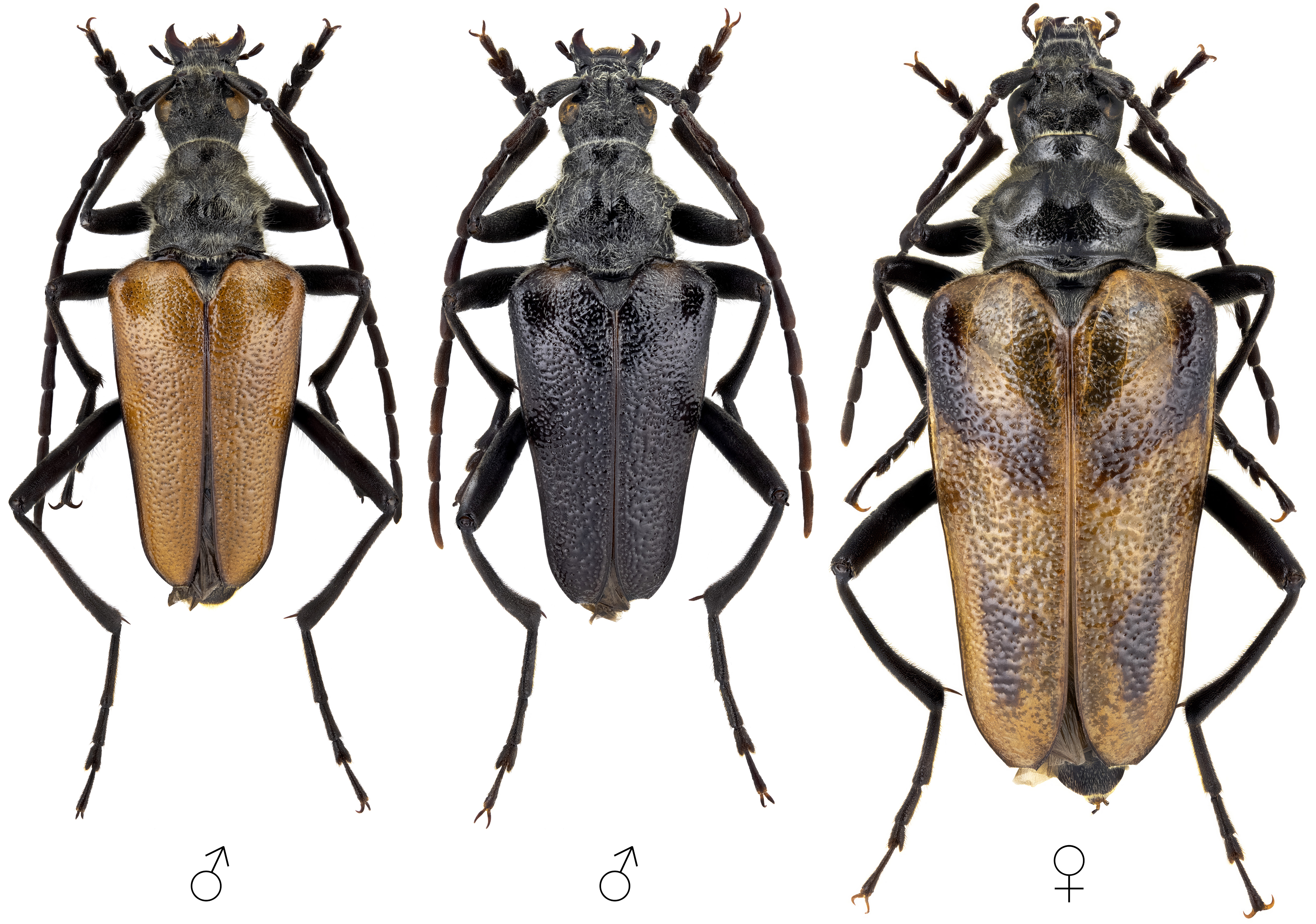
[Photo © David Navrátil, click on the picture for 4K resolution]
Pachyta lamed, a North-Holoarctic boreomontanne species with large area of occurence from Central/North Europe to Japan, has been described from "Europa" as Cerambyx lamed by Carl Linné in 1758 [❖]. In Central Europe, P. lamed is one of the very rare and local inhabitants of preserved spruce stands of medium and higher altitudes. P. lamed larvae feed subcortically in roots of old standing freshly dead conifers (Picea abies is strongly preferred). In oviposition, females prefer free-standing trees with well developed root collars. Pupation after the third overwinterig in the soil at the roots. Adults, active from July to August, can be observed in hot summer weather in flight around host trees or they can be found on felled trees/logs [✧]. Although most authors claim that the P. lamed does not visit flowers (= it is not anthophilous), recent observations by our colleague Milan Krajčík suggest the opposite. He observed a large number of adults on flowers during warm, sunny summer afternoon (Šumava Mountains, South Bohemia, Czechia) [✳].
Based on a study of the taxonomic chronology [✮] of this important taxon and the uncertainties associated with its correct classification within the tribe Rhagiini, Milan Krejčík classified it in the newly established genus Prorhagium [✱]. In our opinion, however, this statement requires a comprehensive research in the frame of whole Rhagiini tribe accompanied by DNA analyses.
Body length: 10 - 20 mm Life cycle: 3 years Adults in: July - August Host plant: coniferous trees (Picea, Abies, Pinus) Distribution: Austria, Belarus, Bulgaria, Czechia, Denmark, Estonia, Finland, France, Germany, Hungary, Italy, Latvia, Lithuania, Moldova, Norway, Poland, Romania, Russia, Slovakia, Slovenia, Sweden, Switzerland, Ukraine, Canada, USA, Japan, Mongolia
The mounted specimens were collected in (from the left): ♂ - Yasnoye (Яcное) village environs (Artyomovsky urban okrug, Primorsky krai, Far Eastern federal district, Russia) on July 27, 1992; ♂ and ♀ - Podbanské environs (Pribylina, Vysoké Tatry Mts., Liptovský Mikuláš district, Žilina region, Slovakia) on July 24 - August 8, 1978 and in July 1995, respectively. The depicted living female beetle was photographed in Podbanské environs (Pribylina, Vysoké Tatry Mts., Liptovský Mikuláš district, Žilina region, Slovakia) on July 29, 2020.Collected by Emil Kučera, Pavel Štraus, Jiří Lorenc and Daniel Rydzi
[❖]
Linné C.:
Systema naturæ per regna tria naturæ secundum classes, ordines, genera, species, cum characteribus, differentiis, synonymis, locis.
Systema naturae (Editio 10) Laur. Salvius, Holmiae 1: 824pp [page 391], 1758. [download]
[✧]
Sláma M.E.F.:
Tesaříkovití – Cerambycidae České republiky a Slovenské republiky / Cerambycidae of the Czech Republic and Slovak Republic.
Milan Sláma private printing, Krhanice, 383pp [pages 198-199], 1998 [ISBN: 80-238-2627-1]. [download]
[✳]
Krajčík M.:
Notes on the bionomics of the adult Cerambyx lamed Linnaeus (Coleoptera, Cerambycidae, Lepturinae).
ANNIMA.X 116: 1-4, 2025. [download]
[✮]
Krajčík M.:
Chronological review of the taxonomy of Cerambyx lamed Linnaeus (Coleoptera, Cerambycidae) from 1758 to 1828.
ANNIMA.X 117: 1-4, 2025. [download]
[✱]
Krajčík M.:
Prorhagium genus novum Krajčík 2025 (Coleoptera, Cerambycidae, Lepturinae, Rhagiini).
ANNIMA.X 118: 1-4, 2025. [download]
Danilevsky M.L.:
Longicorn beetles (Coleoptera, Cerambycoidea) of Russia and adjacent countries. Part 1.
Higher School Consulting, Moscow, 550pp [pages 107-108], 2014. [download]
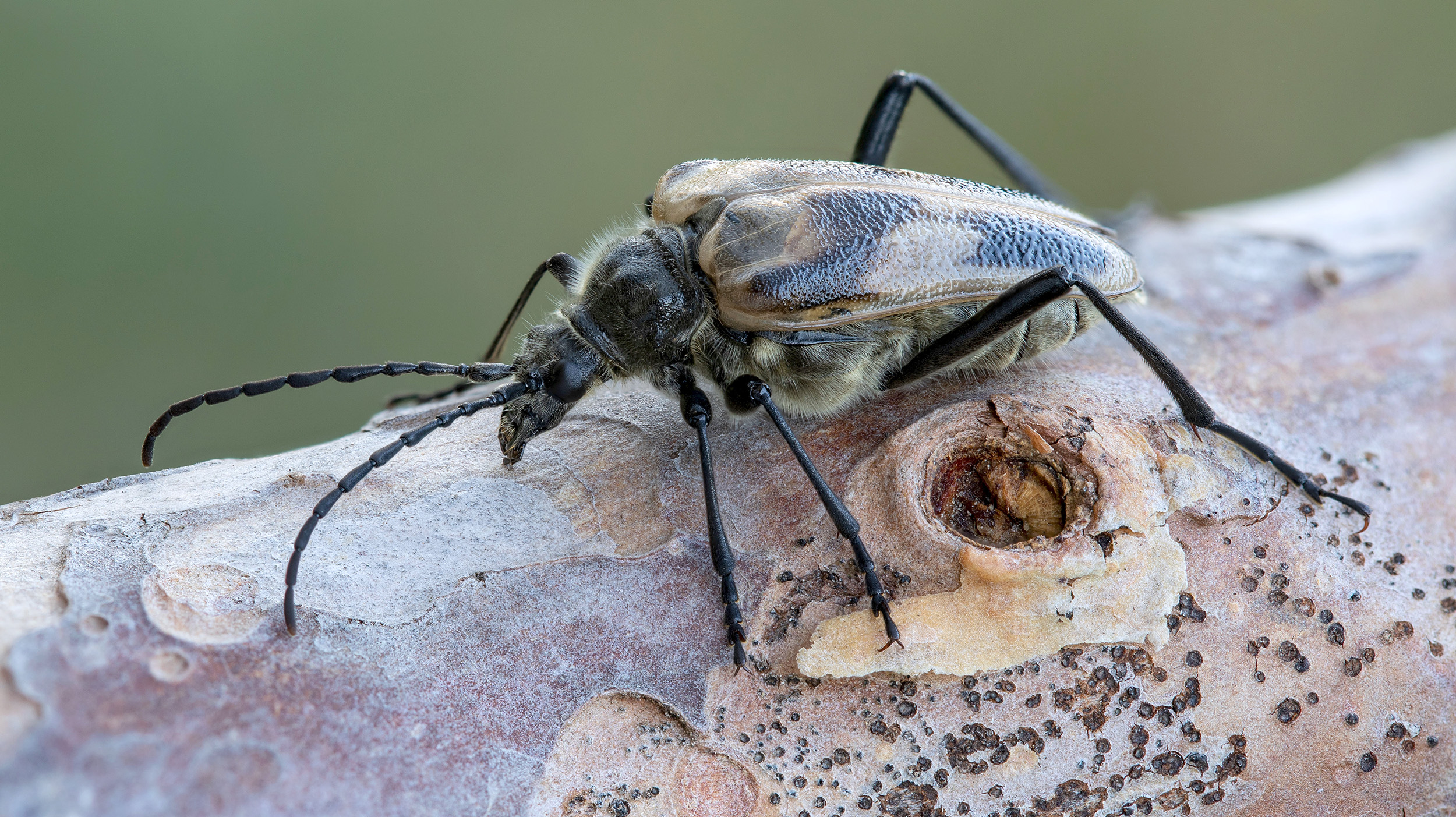
[Photo © Daniel Rydzi]
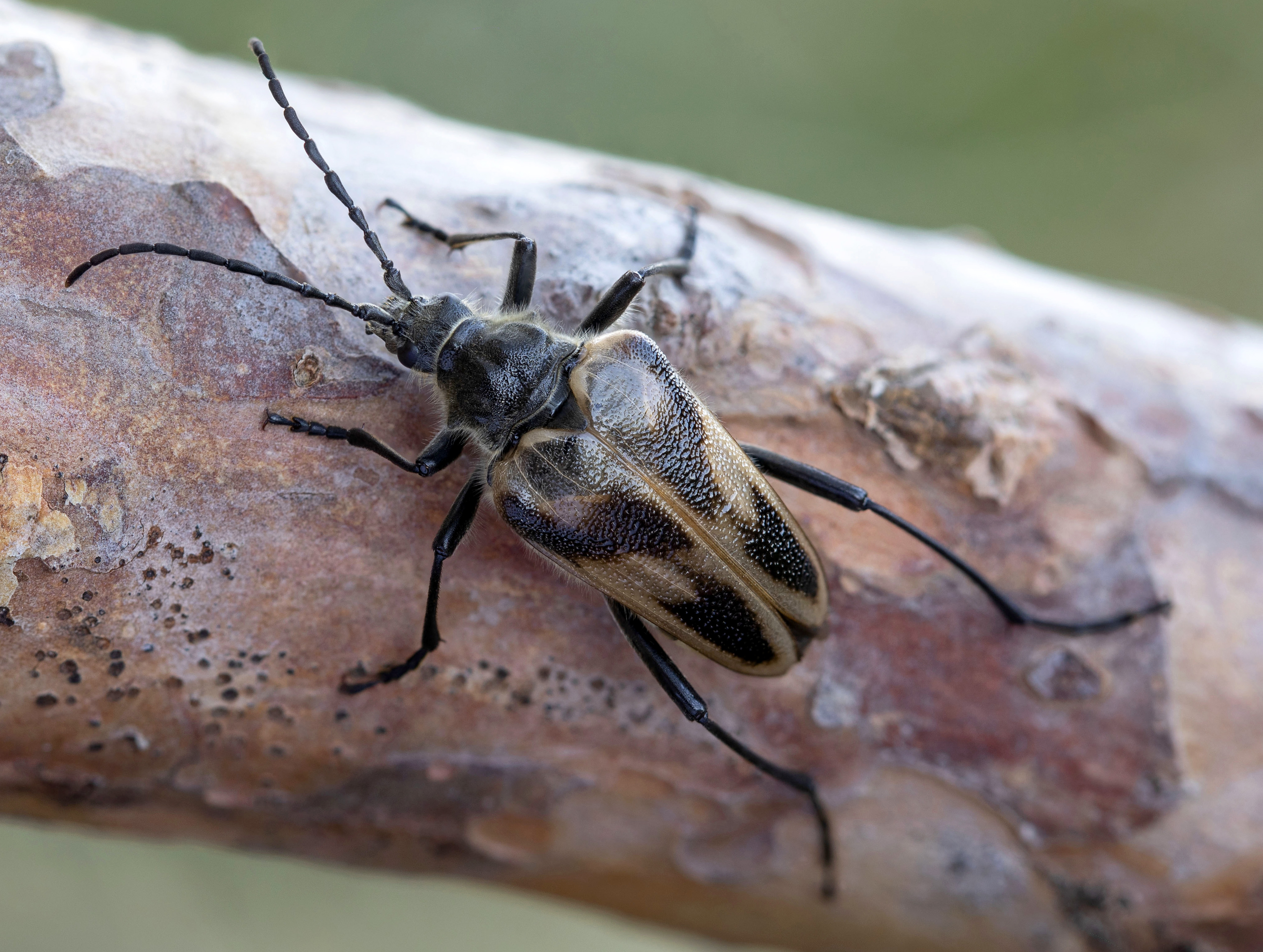
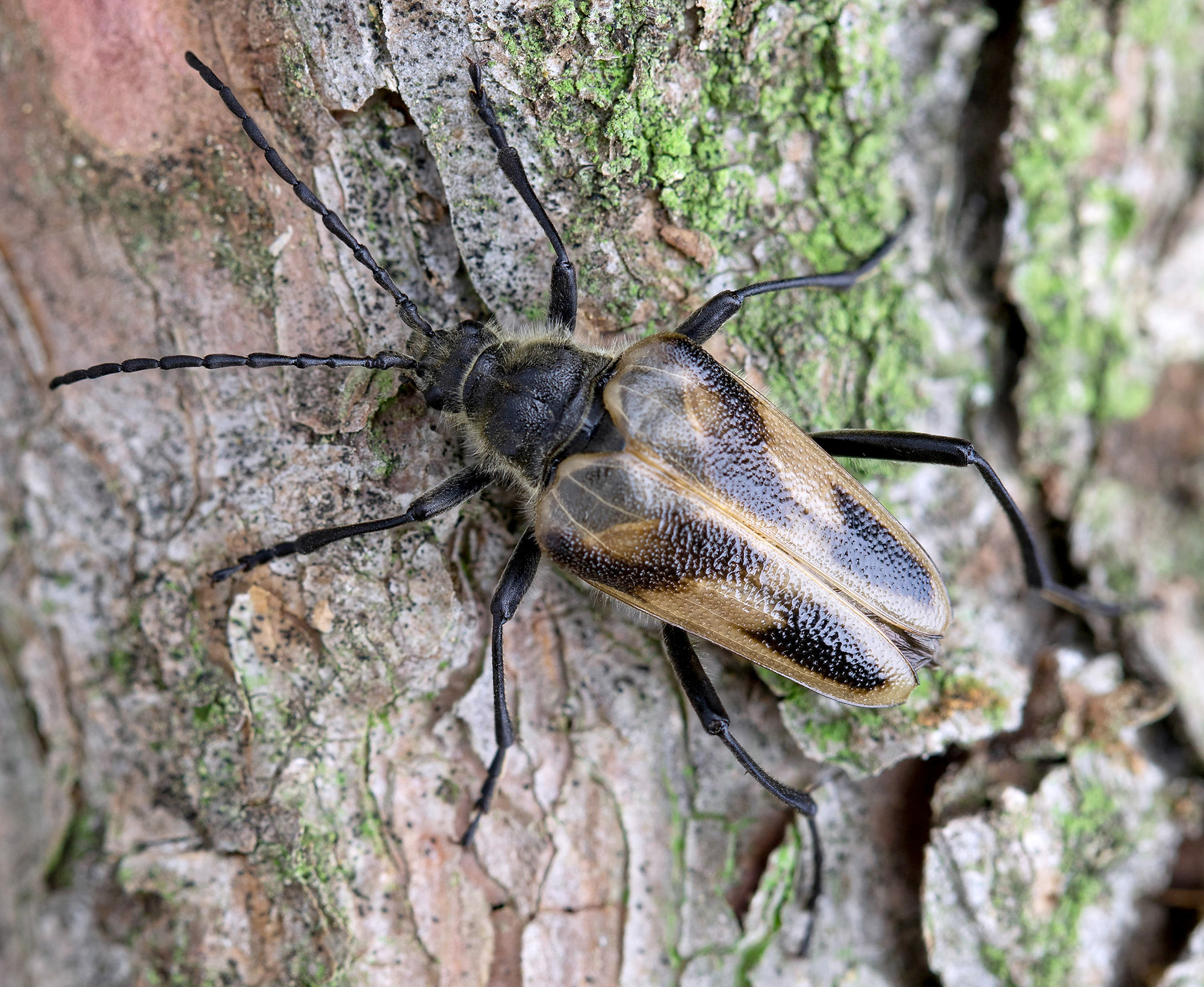
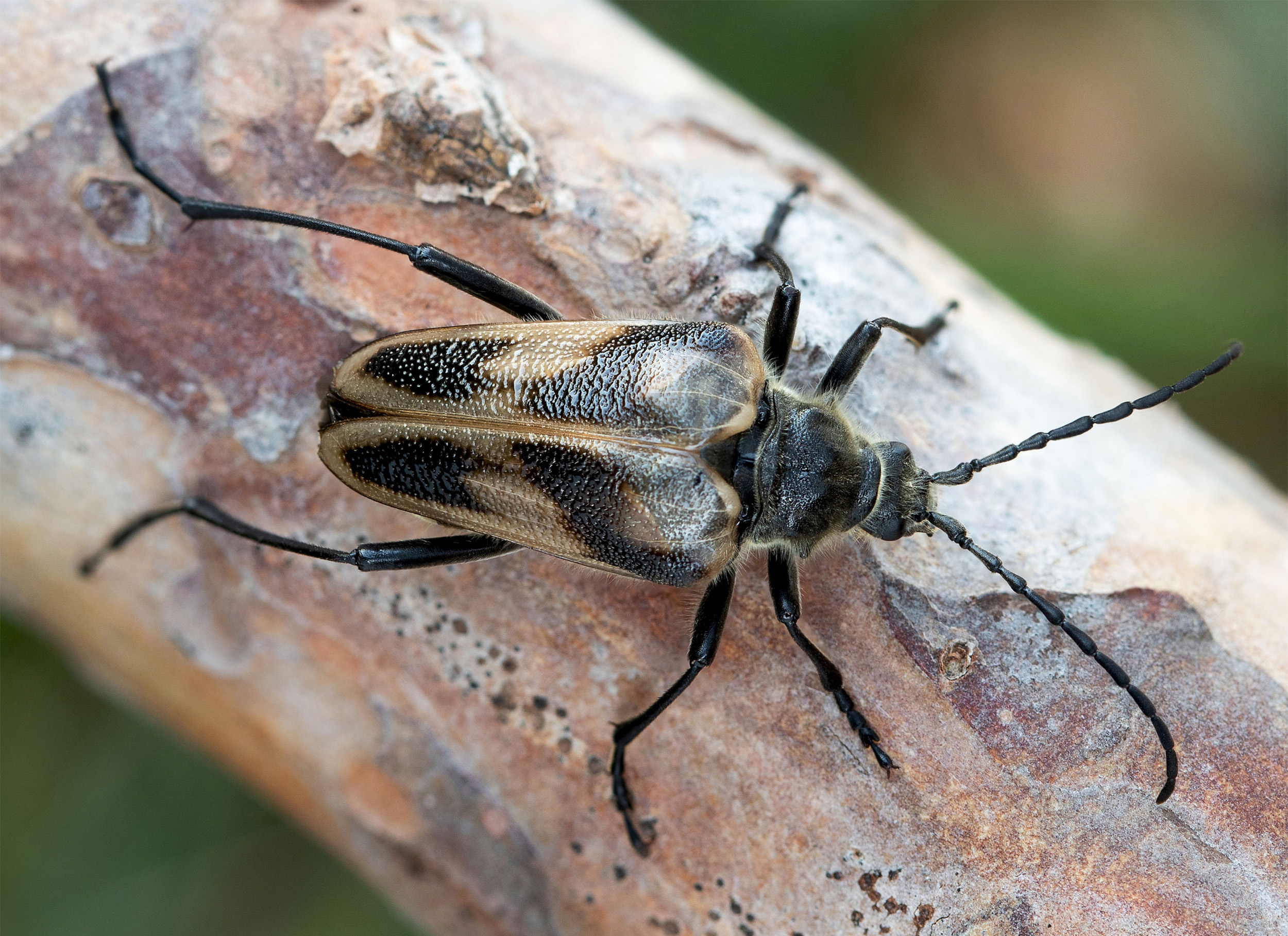
[Photo © Daniel Rydzi]
| Subfamilia | Lepturinae Latreille, 1802 |
| Tribus | Rhagiini Kirby, 1837 |
| Genus | Pachyta Dejean, 1821 |
| Species | Pachyta lamed (Linnaeus, 1758) |
